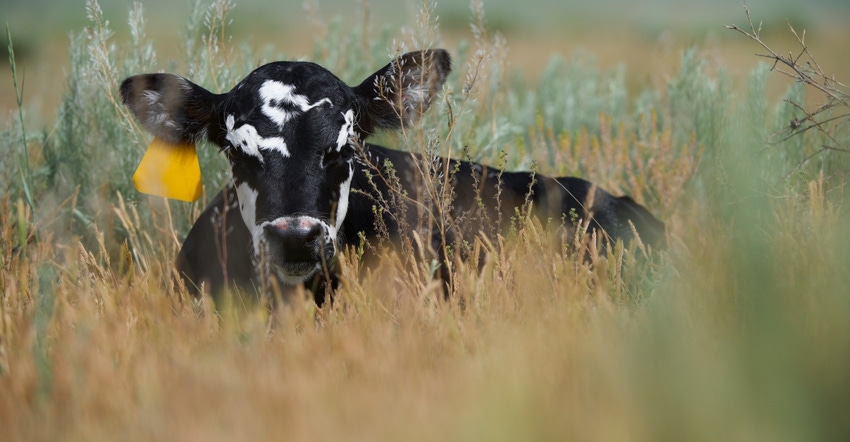Welcome to Health Ranch, where you can find information and resources to help you put the health and well-being of your cattle at the top of the priority list.
Are your replacement heifers reaching their profit potential?
Multiple factors impact the success of a replacement heifer program. Develop cost-effective protocols to ensure your heifers reach their profit potential.
November 1, 2019

Sponsored Content
Replacement heifers hold the key to your herd’s future. Ensure they are set up for long-term success.
There are a number of factors that contribute to the success of a replacement heifer program, including nutritional management, disease prevention techniques and genetic selection. This means producers have many important decisions to make even before heifers give birth to their first calf.
“The most significant challenge producers encounter when they develop heifers to be replacements is getting those heifers ready to breed for the first time, and doing so in a cost-effective way,” said Richard Linhart, DVM, DACT, Boehringer Ingelheim. “Implementing a solid herd health program plays a huge role in ensuring these heifers live up to their profit potential down the road.”
Dr. Linhart encourages producers to keep the following strategies in mind when raising replacement heifers:
Start with adequate nutrition.
Nutritional management is critical for developing healthy replacement heifers. Body condition score plays a significant role in both the short- and long-term success of replacement heifers, especially while heifers are still growing.
To allow for adequate growth and condition, Dr. Linhart recommends a high-quality ration that includes trace mineral supplementation.
“Providing adequate amounts of trace minerals such as selenium, copper, manganese, zinc and cobalt can improve productivity because they are needed for the immune system to function properly,” explained Dr. Linhart. “I’ve seen herds increase pregnancy rates by 10 to 20% just by implementing a complete trace mineral program.”
Working with a local nutritionist can help producers balance cost and quality of the ration depending on specific herd needs.

Consider estrus synchronization.
By taking some of the guesswork out of the breeding program and synching first-time heifers, producers can increase the likelihood of them calving on time in future breeding seasons.
“The primary influencer of calf weaning weight is not genetics, it’s when the heifer calves,” said Dr. Linhart. “If a heifer has her first calf late, she’s more likely to calve late in the future. The timing of calving is critical for heifers, because one of the major challenges in managing a beef herd is getting those young females to re-breed. Estrus synchronization programs allow heifers more opportunities to be bred; their calves often weigh more and tend to be healthier when they’re born earlier in the calving season.”
Establish an effective vaccination program.
“Think of vaccinations as insurance,” Dr. Linhart continued. “You buy flood insurance before a flood, not after. Calfhood vaccinations prepare replacement heifers to withstand respiratory and reproductive disease challenges, so they can maintain adequate condition and produce healthy calves in the future.”
Bovine viral diarrhea virus (BVDV) is one case in which we can ultimately see the health of the cow impact the calf. If a pregnant cow is exposed to BVDV at certain stages of gestation, that virus can then be transmitted to the fetus, and the calf is born persistently infected (PI) with BVDV, and is known as a PI calf. These calves can be devastating to a herd’s profitability, as they shed the BVD virus to any animals they come in contact with, resulting in reduced reproductive efficiency and increased susceptibility to disease.
“Make sure you’re choosing vaccines that are labeled for the diseases you’re trying to prevent, and follow the directions closely,” stated Dr. Linhart. “BVDV is a major cause of economic loss for many producers, as it impacts both respiratory and reproductive health.”
It’s very important that replacement heifers receive reproductive vaccines to prevent potential abortions and PI calves. Today, 78% of BVDV infections are caused by BVDV Type 1b.1 Knowing the most prevalent subtype of BVDV in your area will help you select an appropriate vaccine for your operation.
Administering a respiratory vaccine to calves at 2 to 3 months of age with a booster at weaning, followed by a pre-breeding vaccination, will provide the highest level of protection for replacement heifers—helping to both maintain pregnancies and protect the health of their future calves.
Once you have selected your replacement heifers, management plays the biggest role in ensuring they live up to both their profit potential and their potential as the future of the herd.
“A successful replacement heifer program comes down to a combination of strategic management practices,” concluded Dr. Linhart. “It’s important to work with your local veterinarian and nutritionist to develop a list of protocols that are cost-effective for your herd.”
Reference:
1 Fulton RW, Ridpath JF, Saliki JT, et al. Bovine viral diarrhea virus (BVDV) 1b: predominant BVDV subtype in calves with respiratory disease. Can J Vet Res 2002;66(3):181–190.
©2019 Boehringer Ingelheim Animal Health USA Inc., Duluth, GA. All Rights Reserved. US-BOV-0146-2019a
About the Author(s)
You May Also Like
